Walt Disney’s Story: A Look at the Man Behind the Success
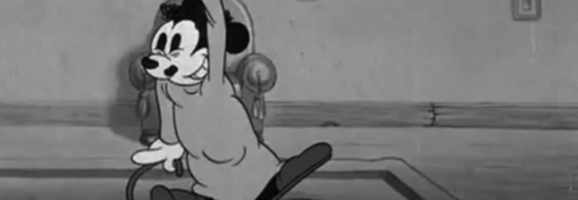
The Walt Disney Company is one of the largest media cooperations in the world in terms of revenue. The Company consists of various television networks, cable channels, associated production and distribution companies and television stations. Some of these include the ABC Television Network, Disney Channel, ESPN Inc. and CTV Specialty Television. Its films and cartoons are known and loved worldwide, generating theme park rides, games, toys, clothing, CDs and other merchandise, as well as spin–off series.
While before Disney there was Hans Christian Anderson and Brothers Grimm, most fairytales are now known and recognised by their Disney counterpart. So what is it that made Mr Disney and his company so famous? Who exactly is the man behind what is one of the most successful businesses in the world?
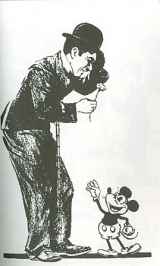 Walt Disney was born in Chicago in 1901, to Elias and Flora Disney. He had three brothers and a younger sister. While his father was said to be an aloof man, Flora was a warm, loving and nurturing figure in his life. As a young boy, Walt experienced a very interrupted childhood. His family moved from Chicago to Missouri and then finally settled in Kansas City when Walt was nine. Since the family was not well–off, Walt and his brothers worked as paperboys and didn’t have much time for school. When Walt did have a spare moment he could be found in the theatre where he would study the vaudeville acts and memorise their gags. He loved Charlie Chaplin. He also enjoyed drawing cartoons for the school paper.
Walt Disney was born in Chicago in 1901, to Elias and Flora Disney. He had three brothers and a younger sister. While his father was said to be an aloof man, Flora was a warm, loving and nurturing figure in his life. As a young boy, Walt experienced a very interrupted childhood. His family moved from Chicago to Missouri and then finally settled in Kansas City when Walt was nine. Since the family was not well–off, Walt and his brothers worked as paperboys and didn’t have much time for school. When Walt did have a spare moment he could be found in the theatre where he would study the vaudeville acts and memorise their gags. He loved Charlie Chaplin. He also enjoyed drawing cartoons for the school paper.
When Walt was 16 his life suddenly changed as America entered the Great War. A patriotic young man, Walt tried to enrol in the army but was rejected because of his age. He managed to forge his date–of–birth, however, in his application to join the Red Cross unit. He spent the remainder of the war in France, where he drove ambulances and then helped with post–war operations. While in France he began a life–long habit of smoking.
When Walt returned to his family in Kansas, his bother Roy helped him get a job at the Pesmen–Rubin Art Studio. Here, he created advertisements for newspapers and magazines. He met fellow cartoonist and life–long friend Ubbe Iwerks, and the two decided to start their own company. They called it Iwerks-Disney Commercial Artists but barely made enough to get by. So Disney sought other work at the Kansas City Film Ad Company. This company made cartoon commercials based on paper cut–outs, and first introduced Walt to the world of film and cartoon animation.
Walt was enthralled by this world and immersed himself in it. He read Edwin G. Lutz’s Animated Cartoons: How They Are Made, Their Origin and Development as well as another 19th century book by a British artist on animal and human locomotion. Borrowing a camera from the company, he set up his backyard shed and began making cartoons of his own. He called them Laugh-O-Grams and sold them to the Newman Theatre in Kansas City. Walt’s Laugh-O-Grams were popular in the Kansas City area and through their success Walt acquired a studio and recruited his own animators. At just 20–years–old, Walt and his friends were a bunch of kids making fun and impromptu short films based on contemporised fairytales through a process of trial and error. Walt did not shy away from experimentation.
A company called Pictorial Clubs signed a contract with the Laugh–O–Gram Company that specified that Disney and his co-workers would get $11,100 for their Laugh-O-Grams. The contract was set out so that they would get their money down the track. Pictorial Clubs went out of business and the only pay Laugh-O-Grams received was $100. Although Walt sued and won the case, he received very little compensation. Walt had started working on a production called Alice’s Wonderland. The project was a risk in itself as Walt had put a live–action character into the world of animation – something done very little. However, thanks to the Pictorial Clubs ordeal, half–way through the project Walt was broke and Laugh-O-Grams went out of business.
In July 1923, Walt sold his camera and, with the little money he had, moved to Hollywood. He had decided he wanted to be in the motion picture business instead and envisioned himself as a director. He moved in with his uncle Robert Disney and set out to look for a job. Every studio in town turned him down. As a last resort Walt returned reluctantly to animation. He had sent his unfinished project Alice’s Wonderland starring child actress Virginia Davis to Margaret Winkler in New York. When the distributer offered him a deal, Walt asked his brother Roy and best friend Iwerks to join him, and together they began the Disney Brothers’ Studio. It was at this studio where a young woman named Lillian Bounds was employed and met Walt. After a year of dating, the two married.
The series, renamed Alice Comedies, was successful but by 1926 the company decided the series had run its course. Margaret Winkler had married Charles Mintz who took over the company and wanted a new animated series. This came with Oswald the Lucky Rabbit, and was an instant hit. It was distributed by Universal – the first major company to distribute one of Disney’s cartoons. The rabbit was drawn and created by Iwerks. It was so successful that it was shown in major theatres around the country with first–run films. In February 1928 the contract for Oswald was up for renewal and Walt boarded a train to New York to strike a deal. Mintz had other plans for Oswald. He decided he no longer needed Walt, and by hiring Walt’s staff could produce the cartoon himself. As distributer, he had the rights to do what he liked with the cartoon.Walt was devastated. He decided then and there that he would now only work on characters to which he owned the rights. On the train ride home from New York, Walt knew he desperately needed a brand new idea. He didn’t want to admit he had lost Oswald without another plan. In the back of his mind he had the idea of a mouse – a sympathetic character that had a lot of potential. He called the mouse Mortimer, the name eventually changed to Mickey Mouse thanks to the insistence of his wife.
Although Mickey Mouse was not an overnight success, the introduction of sound changed everything. Mickey first appeared in May 1928 in the unfinished short Plane Crazy. Six–months later he starred in Steamboat Willie with partner Minnie. The short was a parody of Joseph M. Schencks’ blockbuster Steamboat Bill, Jr, and revolutionary for its time as it was the first cartoon to have synchronised sound. Walt had struck a deal with American businessman Pat Powers who would provide all the necessary sound equipment to theatres and distribute the cartoon. The cartoon had live voice–overs, sound–effect people, and an orchestra. Walt had a very unique and specific idea for Mickey’s voice but could not find anyone who could replicate the way he imagined it to be. So it was Walt who voiced Mickey. Walt and his mouse made front–page news, and Mickey had finally overtaken his silent competitor, Felix the Cat.
Intrigued by animation and music, Walt produced a series called Silly Symphony. The first in the series, The Skeleton Dance, became very popular. It consisted of skeletons simply dancing in a graveyard to music. Walt demonstrated you didn’t need a storyline to provide entertainment. In 1932, Walt discovered the new phenomenon of technicolour. He had been working on a project called Flowers and Trees, which was a part of the Silly Symphony series, and to Roy’s bewilderment told him they would reshoot the animation using the new technology. Flowers and Trees went on to become the first–ever cartoon to win an Oscar.
In the following years, Walt took on a new role within the company. He wanted to focus on story development for new projects, and, while giving guidance to his animators, would leave the animation to them. An art–school was set up within the company, and every animator was required to undergo special training in the Disney–style of animation. Then one day in the 1930s Walt called a meeting. Unlike other meetings, he began with the retelling of his favourite childhood fairytale, Snow White and the Seven Dwarfs, spontaneously acting out all the parts. It was this story that the animators with their new training would bring to the silver screen.
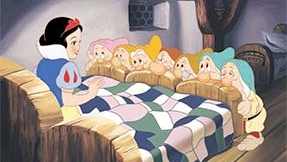
The film industry sneered at the idea of a feature–length cartoon. Never before had their been a technicolour, fully–animated feature. Walt also met disapproval from Roy and his wife. The banker told him he would be risking everything he had on this one film. But Walt believed in his vision for the company, and believed in this retelling of Snow White enough to go through with it. The film premiered at Carthay Circle Theatre in 1937 and received critical acclaim and commercial success. Money flowed in, erasing the entire studio debt within 6–months. Walt received an Academy Award for what was yet another risk that had paid off. Following the success of Snow White, Walt opted for three very different projects: Pinocchio, Fantasia and Bambi.
Outside of movie making, Walt had other projects on the go. He was building a new state–of–the–art studio in Burbank with a multi–plane camera that could pan through different levels of pictures to create a third dimensional effect of the setting. Fantasia was one of Walt’s most unusual and unique projects. His vision was to reproduce the sensation of listening to music in a concert hall accompanied with visual stimulation. He was onto an earlier version of stereo–phonic sound. The total budget of this project, however, cost more than $2 million. Just as the Disney Company seemed to be reaching new heights, war broke out. Overseas income ceased funding the construction of the new Burbank studio, and although Fantasia and Pinocchio are now considered Disney Masterpieces, they did not provide the revenue the company needed. By 1941 the studio was half–a–million dollars in–debt.
After the move to the Burbank studio, salaries were cut to help finances. Many of Walt’s staff went on strike. Walt was said to be astonished and betrayed by what he called the “ingratitude” of those he regarded as not simply employees, but friends, part of his Disney family. Walt was asked to go on a “good will” tour of Latin America – an opportunity to escape the crisis back home. Walt, however, was more comfortable working than being an ambassador for his company. He agreed to the tour as long as it was an opportunity to work on some new films. While Walt was in South America, he received a call from the studio, who was currently working on the film Dumbo. Five hundred army troops had arrived, demanding to move into the studios following the bombing of Pearl Harbour, to protect a nearby aircraft plant. As in the First World War, Walt felt a patriotic urge to contribute to the war effort. The studio switched its focus to producing propaganda shorts. With so many people occupying the Burbank studio, Walt at times felt as though he was losing control and the company was losing its way.
When the war ended, Roy wanted to be financially conservative while Walt wanted to continue to take risks and be adventurous. They finally came to the agreement that the company would try its hand at live–action films. Seal Island, a documentary on seals, won the Oscar for best documentary that year. While Treasure Island was shot in England with a cast including Bobby Driscoll, Robert Newton, Walter Fitzgerald and Ralph Truman. Walt had perfected the story–board process in animation and used this technique to plan out his live–action films.
Although Walt was an incredibly busy man, on Saturdays he would always take his two girls out for the day. He sat and ate peanuts while he watched his girls on the carousel. The idea occurred to him that there should be an amusement park built for families to enjoy together. He could not fund the park alone, and so he set his sights on television. The ABC completed a deal with Disney where it would have a 35 per cent stake in Disneyland in return for an investment of half a million. A weekly show called Disneyland was produced. For 3 consecutive years it was the only show in the top 15 rated programs. Once again a large factor to its success was that it was shot in colour – something Walt insisted was a good investment. Walt also created The Mickey Mouse Club – a show for kids that was presented by kids. He wanted “kids next door” rather than “slick professionals” and encouraged them to call him Uncle Walt.
The ’50s was a period of great financial expansion for Disney. It went from earnings of $6 million at the start of the decade to $70 million. In that time Cinderella was released and became the most successful Disney film since Snow White, Peter Pan and Lady and the Tramp received good receptions, and the live–action film 20,000 Leagues Under the Sea had been produced in cinema scope, which was still new and exciting, techni-colour and had a cast of A–list movie stars.
In July 1955, Walt hosted the world premiere of his new amusement park, Disneyland. He addressed a large congregation of people, including famous friends such as Ronald Regan and Bob Cummings, with these words:
To all who come to this happy place: Welcome. Disneyland is your land. Here age relives fond memories of the past, and here youth may savour the challenge and promise of the future. Disneyland is dedicated to the ideals, the dreams, and the hard facts that have created America, with the hope that we will be a source of joy and inspiration to all the world.
He believed his park would never be finished, that it could always be improved. At New York’s World Fair, Walt produced exhibits where animals and humans could move through technology as animatronic figures. He combined this idea with his desire for a boat ride for children and produced the exhibit It’s a Small World. When the fair closed these exhibits were transferred to Disneyland.
For Walt’s next live–action project, he set his sights on Mary Poppins. His daughter Diane had introduced him to the character when she was a little girl. He visited Australian author P. L. Travers in Chelsea, England to try and convince her to allow him to turn her story into a film. The famous Sherman Brothers created the songs for Mary Poppins and a young Julie Andrews was cast for the main role. The film went on to be nominated for 13 Academy Awards, win 5 Oscars and make 44 million at the box office.
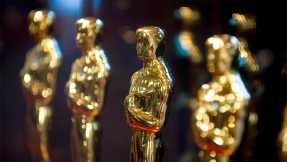 By 62–years–of–age, Walt had won 31 Academy Awards. He was at the pinnacle of his career. One of the most recognised figures in the world. But his health was deteriorating. After his coughing fits worsened, doctors took x–rays of his lungs and discovered a lump the size of a walnut. It was cancer. Walt underwent surgery immediately and was only given 6–months to 2–years to live.
By 62–years–of–age, Walt had won 31 Academy Awards. He was at the pinnacle of his career. One of the most recognised figures in the world. But his health was deteriorating. After his coughing fits worsened, doctors took x–rays of his lungs and discovered a lump the size of a walnut. It was cancer. Walt underwent surgery immediately and was only given 6–months to 2–years to live.
During Roy’s last visit he said Walt had began talking very excitedly about their new Florida project and could see the complete map of what would eventually be named Walt Disney World, in his honour, on the ceiling above his hospital bed. Walt died at 9.30 am on 15 December 1966, 10 days after his 65th birthday. Roy, who had wanted to retire, pressed ahead with the company. Walt Disney World opened in October 1971.
The company that Walt has left behind has reached phenomenal success, especially in the Disney Renaissance period of the ’90s. But what its success comes down to is one very innovative and passionate man who demanded the highest quality and wasn’t afraid to experiment with every endeavour.
As Walt once said,
I only hope we never lose sight of one thing, that it was all started by a mouse.
What do you think? Leave a comment.
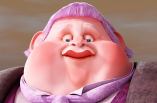
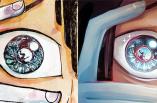
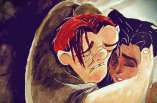


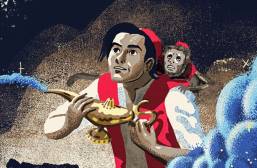
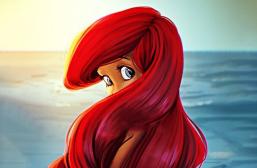
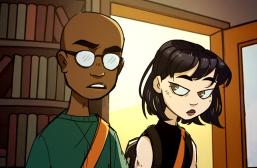
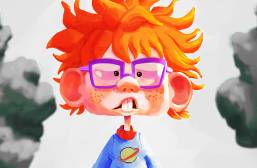
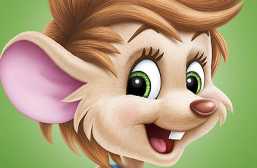
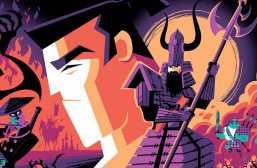
Maybe if Disney had lived longer, The Little Mermaid and Beauty and the Beast would have been made earlier, since they were both stories he wanted to adapt. Although, he did want to keep TLM true to Anderson’s original ending where the mermaid dies. I wonder how well that would have gone over. He also wanted to make an animated version of Don Quixote. It would be interesting to see how that would have worked out. Nice post btw.
Thanks for reading! It would be interesting to see how those films would have turned out and how they would have compared with what has been produced. I also wonder what Disney would have thought of the films released after his death.
Walt Disney is one of the greatest Americans in history.
He is definitely up there, having accomplished a phenomenal amount in his lifetime and leading the way in animation and film making.
Disney haven’t made a decent film since about 1992, have they? Animated, at least.
It’s hard to top Beauty and the Beast, but I do love the Lion King which was 1994. I grew up during the Disney renaissance so all those films were part of my childhood. Hence, I may be a little bias!
Great article. BUT. Disney is a great company to work for if you’re an upper executive….they make a massive amount of money and the workers get paid crumbs.
Things sure have changed since the beginning when it was just Walt and his animator friends. But I guess when businesses grow, we see these sorts of things happen. It really is a shame.
Love Disney movies. Pinocchio, then Snow White, Bambi, Dumbo, Cinderella, Jungle Book, Fantasia and Lady and the Tramp are the best Disney features. Peter Pan and Lion King are more the average ones, still good but far from the best. I would give them a solid 7/10 rating while the others I mentioned are more in the 8-9/10 league.
I love the classic Disney movies, Lady and the Tramp, Sleeping Beauty, Fox and the Hound, and some of the newer ones like The Lion King, Aladdin, Beauty and the Beast, The little Mermaid, and Hercules.
Lady and the Tramp and the Fox and the Hound are probably my favourite out of the classic Disney movies. But I have to say there are not many I didn’t enjoy… I can’t think of any classic ones that I don’t have on DVD. But as a ’90s kid, I love the ’90s films too!
Beauty and the Beast is such an enchanting movie -it’s got so much heart. Also Aladdin, Meet The Robinsons (I really like it compared to many of the other modern Disney movies) and Snow White of course!
Beauty and the Beast is my favourite! And the Lion King. I’m yet to see Meet The Robinsons! I would have loved to see Snow White when it first came out in the ’30s. Its hard to imagine what that experience would have been like, when no one had seen anything like it before.
Ever since I was a baby, my favorite Disney movie was ALWAYS “The Lion King.” 🙂
No matter how many Disney movies there are, that one will always have a special place in my heart! ^_^
Same here Melissa. I will always treasure the Lion King. The characters, the story, the scenary, the humour, the emotion, the music! It has everything.
Many of those are my favourites too! But I would also highly rate Beauty and the Beast!
Disney had a few good moments after Walt died, I enjoyed “Return To Oz” but the status of Disney studios now, is complete crap. They take over Marvel and bring out as many remakes of the previously released films as possible. They took over Star Wars which is a very sacred childhood memory to me and they’re making “Yoda: Origins” and a “Young Han Solo” film. Anything just to make a buck and they can get away with making total flops because Disney is one of the top 4 studios in Hollywood today.
NOTE TO HOLLYWOOD: Get a producer that cares about the story and you just might make EVEN MORE money!
In the last decade the only Disney film that really stood out for me was Tangled, other than some of its films with Pixar. I haven’t yet seen Frozen. Remakes hardly every top the original – same with the sequel. But it’s such a large company, you’d hope it could get a good group of people together and continue to make good films as in the past.
That was an absolutely fascinating read. I actually never realised just how close we came never to having Disney as it is today at all, and the bit about how much of a gamble Walt took on Snow White… well, it just goes to show how a big risk can pay off, sometimes, and change the film industry as it does so!
Thanks Sean! Glad you enjoyed it! I was also really fascinated researching some of this stuff! It just shows how things don’t just happen, it’s a long journey and one with lots of risks and decisions that could go either way. It’s kind of reassuring to see how Walt faced obstacles just as everyone else in life and their careers.
This was a fascinating article. However, I would adhere to checking spelling and grammar again, because there are some minor mistakes near the beginning of it. As a whole, the article is sound though. I can tell that there was a lot of research put into this piece and it gives me a renowned surge of creativity that I’ve thought I’ve lost since studying for a Creative Writing degree.
I also did not realize how close of a call it was for all of us to not have Disneyland or anything Disney to this day. If it weren’t for Walt’s perseverance and love for taking risks then we wouldn’t have it at all. And of course, I need to thank his brother Roy for continuing on with the company after Walt’s passing because if he hadn’t then we definitely wouldn’t have one of the most successful companies.
Great writing.
Thanks for the feedback! Glad you enjoyed the article and good luck with your degree!
Thank you for your article, it’s clear that a lot of effort was put to write it all! I grew up watching Disney films and I think that they’re timeless films which have stayed with me through the years. I can’t imagine a childhood without Disney. Walt Disney is a truly inspiring man who always taught children to never lose hope for their dreams. I’m glad that the company has been able to take this lesson forward and reinvent in new ways with successes like Frozen.
I completely agree with you! My childhood was full of Disney! I just saw Frozen the other day and really enjoyed it! I hope the company continues to produce timeless masterpieces well into the future!
Disney is an intriguing company, and Walt himself was an intriguing man. He truly re-invented the cinema, and gave way for animation to be well-loved form.
I’m not entirely sure that films such as The Hunchback of Notre Dame, Aladdin, and The Princess and the Frog could have been made during Disney’s lifetime, however. It is well-documented that Disney was quite a racist man. While this can be attributed to being a sign of the times, it is also for the best that the Disney corporation has progressed to the extent it has. I do have to wonder if they reason it took so long to have heroines of color was partially due to the company’s past.
Either way, I have grown up with Disney movies, and count them among my favorite films. I appreciate your article, and all of the research you must have done in order to write it! 🙂
Thank you for this piece! Excellent read!
Good article. Can’t hear enough about that guy’s life. Always inspiring.
The story is very interesting .his true biography made me inspire.thank you once again this was really interesting to read.I loved reading this.it is very informative .thanks a lot once again .His biography is explained very clearly.
He is too inspiring.
He is too inspiring.I love his story.He was so smart.
Disney’s short cartoons became more aggressive in tone after the 1930s. It was one of the few areas in which he had to strongly compete with someone else–namely Warner Brothers Cartoons and MGM. Otherwise, no other animation studio could match his transitions to tv and to theme parks.
I like Steamboat Willie.
An amazing success journey!! I am impressed as well as inspired!!!!!
An amazing success journey!! I am impressed as well as inspired!!!!!
Never to lose hope!!!
Excellent story about persistency, consistency and the love of passion. Or what some say” building from within.”
How would i site this author in an essay??
You can find the author details at the end of the content of the article. This piece is written by Siobhan Calafiore and you can access her profile at:
https://the-artifice.com/author/SiobhanCalafiore
would like to talk to anyone rom the Disney family as to the facft that at the age of 15 mr walt Disney worked on the van noy railroad selling newspapers.now this date and 16 years into her careear I have a daughter working for the Disney family,just goes to show just how small this world really is. james van noy
Such a inspirational, enthusiastic and audacious person. It has been written meticulously and in-depth.